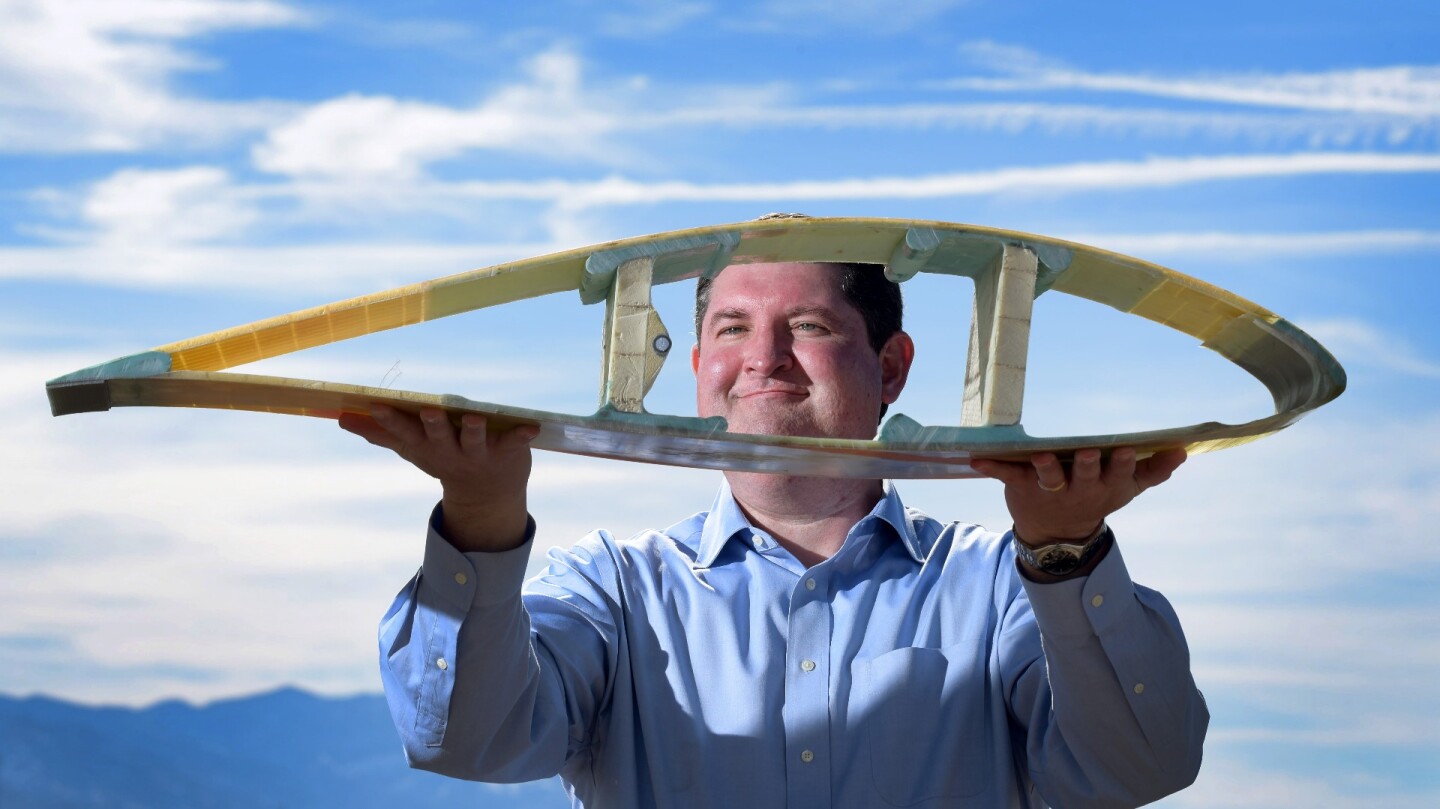Sandia National Laboratories hasrevealed its plans for the extreme-scale Segmented UltralightMorphing Rotor (SUMR). The turbines are built to deal with the extreme conditions of an offshore farm, featuring a folding build to cope with high winds.
The majority of current US windturbines produce between 1 and 2 MW of power, using blades around 165ft (50 m) long, and even the largest commercially-available modelsare only capable of 8 MW output, with rotors measuring 262 ft (80 m).Sandia plans to make its new blades much larger, two and half timesthat of any rival, producing awhopping 50 MW of power.
Of course, when you're building thatbig, there are some significant challenges to overcome. Manufacturingand transporting large scale rotor blades is expensive andlogistically difficult. To combat that, the new blades can bemanufactured in segments, lowering costs and making them much easierto transport.
The new design also places the turbinesdownwind of the tower, rather than in the upwind position ofconventional designs. When dangerously high winds strike, the bladesare able to fold in to avoid damage, opening back out to takemaximize energy production once the weather calms down.

The design is also inspired by the waythat palm trees move in storms. The trunk features a segmented buildwith a series of cylindrical shells, which able to bend in the windwithout compromising segment stiffness.
Exascale turbines such as this couldhave a huge impact on green energy production. The research wasfunded by the Department of Energy's (DOE) Advanced Research ProjectsAgency Energy program, and could provide a good way to reach its planto provide 20 percent of the country's energy from wind by 2030.
"The US has great offshore wind energy potential, but offshore installations are expensive, so largerturbines are needed to capture that energy at an affordable cost,"said the lead blade designer on the project, Todd Griffith.
Source: Sandia National Laboratories





